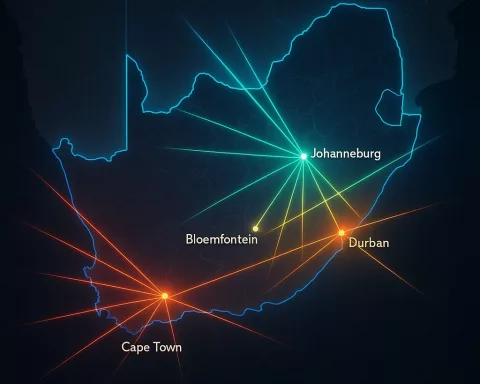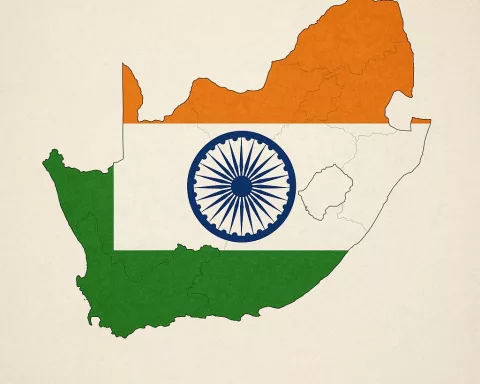A report from the South African Human Rights Commission has highlighted the negative effect of school dress codes. The investigation found that strict hair rules and gender-specific uniform mandates violate learners’ right to dignity and education. The report also calls for a reassessment of these policies, citing biased hair policies and the financial burden of school uniforms. The report has sparked a debate about the consequences of gendered school uniforms and the potential infringement upon learners’ rights.
The South African Human Rights Commission has released a report highlighting the negative impact of school dress codes on student rights. The investigation found that strict hair rules and gender-specific uniform mandates violate learners’ right to dignity and education. The report also draws attention to biased hair policies and the financial burden of school uniforms, calling for a reassessment of these policies. Gender-biased school uniform policies could potentially infringe upon Section 9 of the Constitution and Section 9 of the Equality Act.
Section 1: Unveiling the Reality Behind School Uniform Rules
The South African Human Rights Commission (SAHRC) has recently released an eye-opening report that spotlights the severe implications of school dress codes on student rights. The investigation has unearthed disturbing instances where learners’ right to dignity and education have been curbed due to stringent hair rules and gender-specific uniform mandates.
Reacting to a rising tide of complaints of over-regulation of student appearance, the SAHRC decided to scrutinize school uniform rules. The findings of their investigation were nothing less than shocking. The report indicates that there doesn’t appear to be any justifiable reason for enforcing hair length rules, differentiating between male and female students, banning natural hair, or insisting on gender-biased uniforms. The SAHRC further identified the enforcement of dress codes to the extent of controlling girls’ hair and underwear color as a breach of their dignity and privacy.
Section 2: The Gender Bias in Uniform Policies
The apparent focus on girls’ clothing regulations is a clear reflection of ingrained gender bias. Intriguingly, provisions about boys’ underwear are conspicuously absent. The SAHRC points out that such gender-biased school uniform policies could be interpreted as bolstering traditional gender roles, potentially infringing upon Section 9 of the Constitution and Section 9 of the Equality Act.
Moreover, the SAHRC report has sparked a debate about the consequences of these uniforms on gender identity. The findings underscore how gendered school uniforms can perpetuate stereotypes, compromise human dignity, and confine learners’ liberty to express their gender identities.
The report has met with varied responses from the portfolio committee and educational advocacy groups. Pila-sande Mkuzo, a junior attorney at the Equal Education Legal Centre, lauded the report, stressing the urgent necessity for nationwide guidelines and policies pertaining to school conduct codes. The committee chairperson voiced support for the report, although the committee expressed reservations about the SAHRC’s timeline for implementing its recommendations.
Section 3: The Financial Burden of School Uniforms
The report also delves into the financial burdens imposed by school uniforms. It proposes that the Department of Basic Education (DBE) should perform a review to set a limit on the costs of basic school uniforms, keeping socio-economic conditions in mind. In this regard, the commission has recommended against making expensive items like blazers mandatory.
In addition, the SAHRC’s inquiry has brought attention to biased hair policies. Particularly noteworthy are the ‘two-finger’ rule for black male students and punitive measures against students sporting potentially contentious hairstyles, like braids. These policies reveal stubborn biases anchored in Eurocentric norms that perpetuate the stigma attached to African hairstyles.
Section 4: The Call for a Policy Review
In summary, the SAHRC’s report offers a persuasive critique of how school dress code regulations, ostensibly implemented in the name of discipline and uniformity, could be infringing upon learners’ rights to dignity, equality, and education. It emphasizes the pressing need for a thorough reassessment of these policies, considering their impact on students’ rights, their socio-economic situations, and their freedom to express their identities. As South Africa continues to confront the consequences of its historical legacy, it is vital to ensure that our schools – the breeding ground of our future – cultivate an atmosphere of inclusion, respect, and dignity for all learners.
1. What negative effects do school dress codes have on South African learners?
The South African Human Rights Commission’s report highlights that strict hair rules and gender-specific uniform mandates violate learners’ right to dignity and education, leading to a negative impact on student rights.
2. What are some examples of biased hair policies in South African schools?
The report identifies policies such as the ‘two-finger’ rule for black male students and punitive measures against students sporting potentially contentious hairstyles like braids, as examples of biased hair policies in South African schools.
3. What impact do gendered school uniforms have on learners’ gender identity?
Gendered school uniforms can perpetuate stereotypes, compromise human dignity, and confine learners’ liberty to express their gender identities, according to the SAHRC report.
4. How does the financial burden of school uniforms impact learners?
The report delves into the financial burden imposed by school uniforms and proposes that the Department of Basic Education should perform a review to set a limit on the costs of basic school uniforms, keeping socio-economic conditions in mind.
5. What does the SAHRC report recommend for school dress code policies?
The SAHRC report recommends a thorough reassessment of school dress code policies, considering their impact on students’ rights, their socio-economic situations, and their freedom to express their identities.
6. How has the SAHRC report been received by educational advocacy groups and government committees?
The report has met with varied responses from the portfolio committee and educational advocacy groups. Some have voiced support for the report, stressing the urgent necessity for nationwide guidelines and policies pertaining to school conduct codes, while others expressed reservations about the SAHRC’s timeline for implementing its recommendations.












